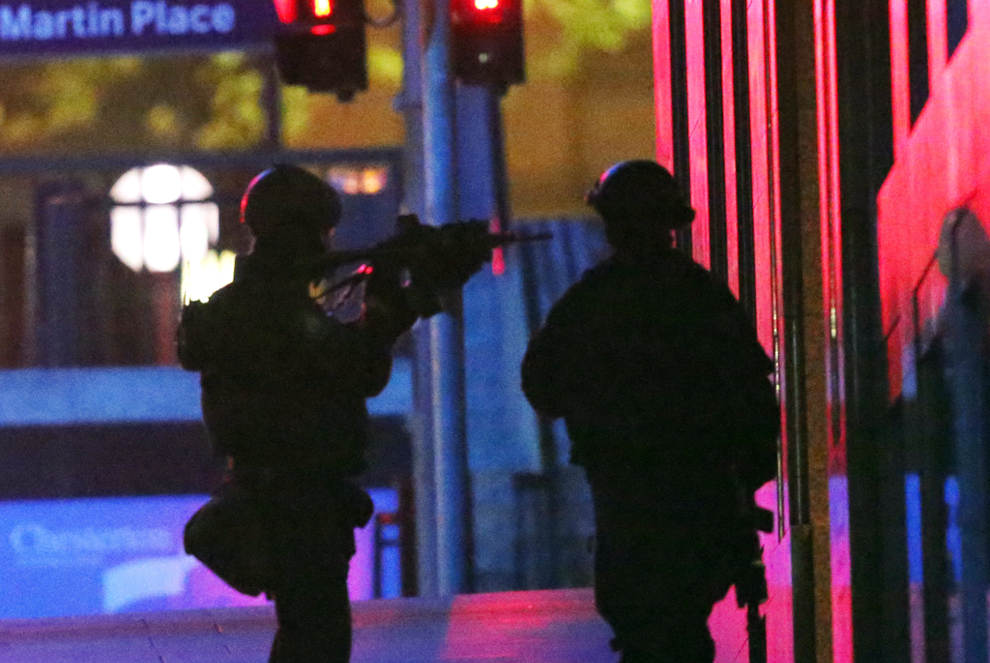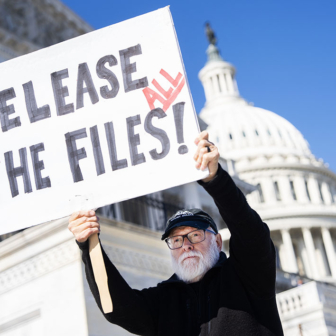Many of us will have watched more television in the past couple of days than we would normally watch in weeks. As the Martin Place siege unfolded, newsroom staff on every major channel set themselves up for the marathon. We are used to the spectacle of journalists flocking like hornets to the site of any major incident, but the thrill of the breaking story was short-lived, replaced by stoic professionalism as the hours passed.
Reporters in the street were out there for the long haul, moved on intermittently by police as they dealt with live crosses for which, time and again, they had nothing new to report. In the studio, presenters attempted updates with whatever information came their way, forced to repeat themselves so frequently they must have felt like robots. Yet we were glued to the scene, just as they were glued to the situation, watching for the point at which it might turn, with who knew what consequences.
Was this all really necessary? Sometime during the afternoon I began to wonder if the real story was a spectacular overreaction to a relatively minor incident: one guy with a gun, with no evident links to any terrorist organisation, who might not even be capable of holding the hostages for very long. Having worked in central London during the IRA bombing campaigns of the early 1970s, when terror alerts and evacuations were routine, I just couldn’t see why this was being treated as something that might turn into Australia’s 9/11.
Nevertheless, I kept up the vigil in front of the screen, with a growing respect for the professionalism of those who were providing and coordinating the reportage. One of the principal lines of commentary was that this was a state- of-the-art tactical operation. It was important, one presenter stressed, that the public should be aware of just how well-prepared our services are for such threats to public security.
It’s also worth being aware of how live-to-air television is now an integral part of our emergency-response system. The ABC in particular is of sterling service in natural disasters, providing logistical communications across regional areas and maintaining the highest standards of accuracy and responsibility in disseminating information to the public.
With the hostage drama, the requirements were quite different, and here the Seven Network was at the centre of the picture, their studios directly opposite the Lindt cafe and their floor-to-ceiling windows overlooking the scene. Seven’s news and current affairs staff found themselves de facto eyewitnesses, and in a unique position both to relay the facts of the situation on the ground, and to interpret the evolving mood. After their evacuation from the studio, they maintained continuous coverage from outside the cordon.
This was not by any means what Paul Daley in the Guardian described as “an endless barrage of speculation” between journalists with nothing to contribute but inanity, irresponsibility and insensitivity. In a situation of this kind, not knowing is part of the deal. Everyone, including the SWAT team on site and the hostages in the room, is in a state of uncertainty; speculation is fraught and mistaken attempts to second guess the critical factors may prove disastrous. From a journalist’s point of view, one of the most demanding aspects of the job is to work with the uncertainty and abide by police embargos on a wide range of questions. Even when the hostages were ordered to send Facebook messages to particular media outlets, those who received them were (for the most part) scrupulous in abiding by instructions to keep them out of the public domain.
There are occasions when live television is more valuable in helping us to accept what we don’t know than in catering for the voracious public appetite to know everything at once. No one was going to find out what was going on in the Lindt cafe, but the team at Seven did their best to reel in circumstantial information and analysis from a range of specialists: hostage negotiators, those with experience of anti-terror operations, tactical analysts, trauma counsellors. The presenters themselves kept their cool. Islamic leaders brought in to offer comment and perspective could do so in a considerate and supportive setting.
Coverage continued with an extended morning-after edition of Sunrise, hosted from Martin Place by David Koch and Natalie Barr. The “breaking news” tape at the bottom of the screen spelled out the themes of the moment: “Siege Ends in Gunfire,” “Bail Anger,” “Outpouring of Grief.”
On the first of these, they had something significant to impart. Presenter Chris Reason, allowed back into the studio for the night shift, had an excellent vantage point from which he could see directly through the windows into the cafe. And sitting beside him was a sniper from the SWAT team. Shortly after 2 am, some of the hostages escaped, and a shot rang out. “Window two, hostage down,” was the cue for the police gunmen to go in. Reason, visibly exhausted, was continuing to offer a moment-by-moment recap of all this ten hours later.
“Outpouring of Grief” was by then taking over as the dominant story. For the past twenty-four hours, Seven’s news team had mediated public reaction and steered away from obvious trigger points, but now was the time for the dual gremlins of the tabloid world – anger and sentimentality – to perform their ritual display. A few flowers had been laid in the designated spot in Martin Place at 6 am, but by mid morning there were hundreds upon hundreds of bouquets.
Political leaders had been careful to cater to the sentimental end of the spectrum and soft pedal on the anger. “We are stronger together,” said NSW premier Mike Baird, “and must come together like never before.” We are lovely, is the message – “free, open and generous,” as Tony Abbott said – and we embrace each other, sharing our grief for the injuries sustained from assault by those who are not like us.
Since the hostage-taker, Man Haron Monis, had no direct links to ISIS or any other terrorist organisation, there was no pretext for grandstanding against terrorists, but the ad hominem attacks were starting. Koch referred to him, not unreasonably, as “a one-off lunatic who has been tipped over the edge.” By all accounts – and quite a few of them are emerging – he was well-known among his community for being volatile, unstable, violent and abusive. He was facing over fifty assault charges and one of being an accessory to murder. Why on earth was he on the loose? “Bail Anger” is surely a justified phenomenon, but a whole raft of community and police services are required to handle a case like this effectively. The scapegoating impulse risks spreading from Man Haron Monis to the magistrate who granted him bail, the lawyer who pleaded his case, and the local police who failed to respond to urgent community warnings that this man was dangerous.
In the coming weeks and months, some very hard questions need to be dealt with about this whole affair, questions of the kind that can’t and probably shouldn’t be addressed in the context of rolling live coverage. Aside from the terrible human tragedy of it, the Martin Place siege must be one of the most costly and disruptive events in Sydney’s history. The Harbour Bridge was closed, most of the CBD effectively shut down, businesses had to send staff home, retailers lost a day’s trade during the critical Christmas period, and people in the street were expressing a sense that the city has “changed forever.”
One of the ironies of the day was that while the siege was taking place, treasurer Joe Hockey was delivering a widely anticipated budget update, in which he predicted a deficit upwards of $40 billion. Little space was left in our media for attending to this news.
The lure of collectively starring in an international melodrama that shows us as a free, open and generous people (in spite of what some of our government policies might suggest) evidently has a strong purchase in the Australian psyche. But the costs are astronomical. It is all very well to boast of the extraordinary performance of our specially trained anti-terrorist response teams. They are a massively expensive resource, of the kind this government is happy to fund. What it does not want to pay for are the social and community services that might, in this case, have enabled us to contain an unmanageable and dangerous individual before any of this could happen. •




